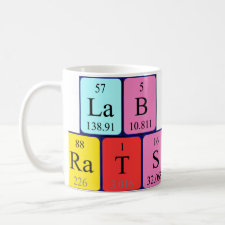
Authors: Li H, Li G, Li ZP, Lu CM, Li YN, Tan XZ
Article Title: Surface imprinting on nano-TiO2 as sacrificial material for the preparation of hollow chlorogenic acid imprinted polymer and its recognition behavior.
Publication date: 2013
Journal: Applied Surface Science
Volume: 264
Page numbers: 644-652.
DOI: 10.1016/j.apsusc.2012.10.085
Alternative URL: http://www.sciencedirect.com/science/article/pii/S0169433212018107
Abstract: Surface imprinting chlorogenic acid (CGA) on nano-TiO2 particles as sacrificial support material was successfully performed by using 4-vinylpyridine (4-VP) as functional monomer to obtain a hollow CGA-imprinted polymer (H-MIP1). Fourier transmission infrared spectrometry (FTIR) and scanning electron microscopy (SEM) were utilized for structurally characterizing the polymers obtained and adsorption dynamics and thermodynamic behavior investigated according to different models. Binding selectivity, adsorption capacity and the reusability for this H-MIP1 were also evaluated. This hollow CGA imprinted polymer shows rapid binding dynamics and higher binding capability toward the template molecules. The pseudo first-order kinetic model was shown best to describe the binding process of CGA on the H-MIP1 and Langmuir isotherm model best to fit the experimental adsorption isotherm data. Through adsorption isotherms at different temperatures, thermodynamic parameter values were obtained. Selectivity coefficients for the H-MIP1 toward the template were 2.209, 3.213, 1.746 and 2.353 relative to CA, VA, PCA and GA, respectively. This H-MIP1 was also indicated with a good imprint effect and a high capability to capture CGA from methanol extract of Eucommia ulmoides (E. ulmoides) leaves. Additionally, a good reusability for this imprinted polymer was exhibited during repeated adsorptionGă˘desorption use
Template and target information: chlorogenic acid, CGA
Author keywords: surface imprinting, Nano-TiO2, chlorogenic acid, adsorption



Join the Society for Molecular Imprinting

New items RSS feed
Sign-up for e-mail updates:
Choose between receiving an occasional newsletter or more frequent e-mail alerts.
Click here to go to the sign-up page.
Is your name elemental or peptidic? Enter your name and find out by clicking either of the buttons below!
Other products you may like:
 MIPdatabase
MIPdatabase









